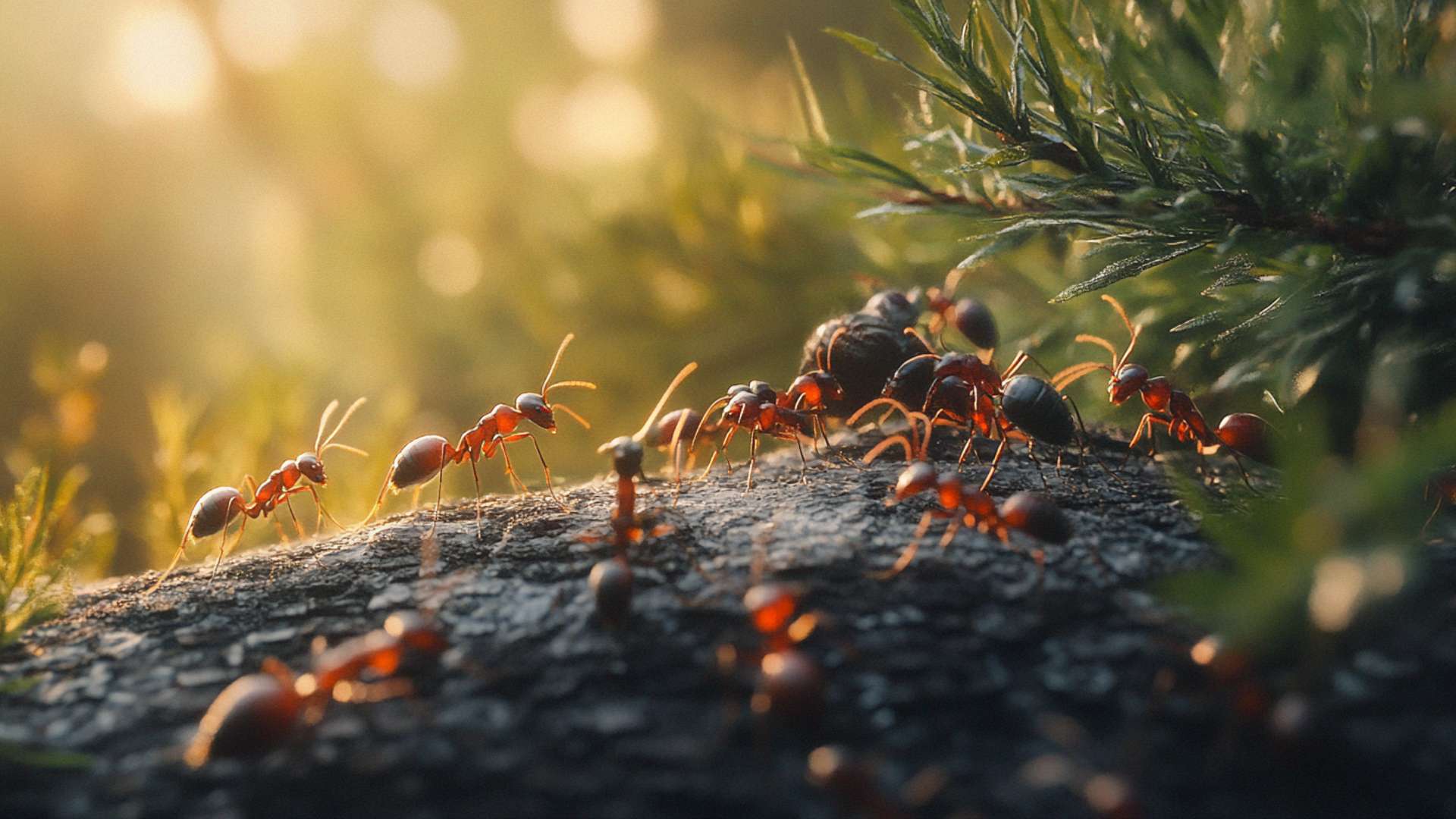The world of carpenter ants is a fascinating one, filled with intricate behaviors and curious dietary habits. These industrious insects, belonging to the genus Camponotus, have made a name for themselves with their ability to excavate wood and create elaborate nests within it.
However, their eating habits are equally intriguing and play a significant role in their survival and impact on human habitats. Understanding what carpenter ants eat is crucial for effective pest management and protection of our homes.
A Glimpse into Carpenter Ants’ Dietary Habits
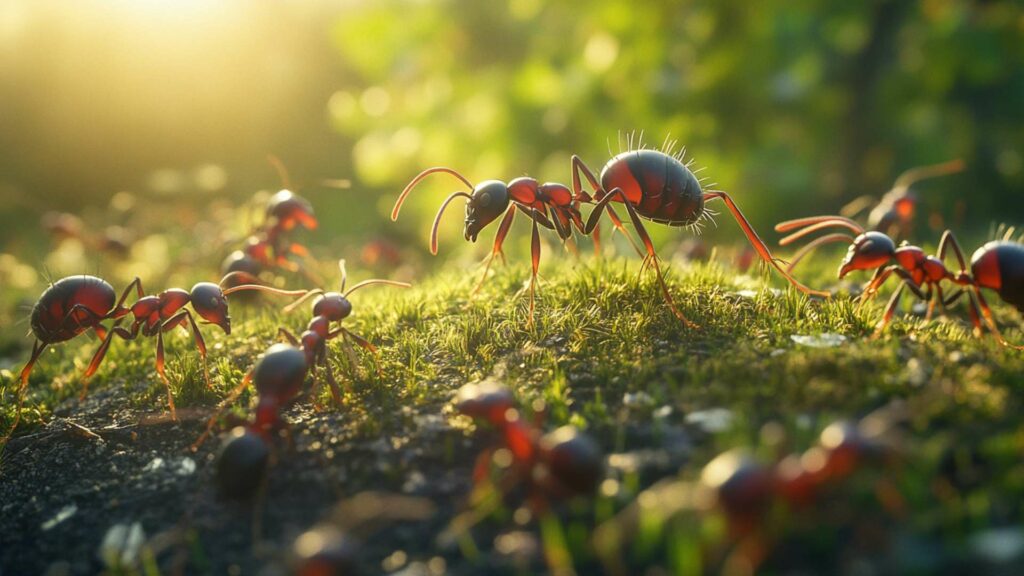
Carpenter ants have varied dietary preferences that encompass both sweet and protein-rich foods. Like many other ant species, they harbor a particular fondness for sweet substances – be it flower nectar, honeydew produced by sap-sucking insects like aphids or scale insects, or even fruit juices oozing from fallen fruits.
These sugary treats serve as an essential energy source for the carpenter ants that eat wood, as they go about their daily activities within their nests and beyond. However, it would be remiss not to mention that not all carpenter ant species crave sugars exclusively; some supplement their diet with protein-rich sources as well.
These sources can include dead insects found in the environment or even meat scraps if readily available. This balanced diet allows carpenter ants to meet their nutritional needs while enabling them to participate in nutrient recycling within ecosystems.
The Importance of Understanding Carpenter Ants’ Diet
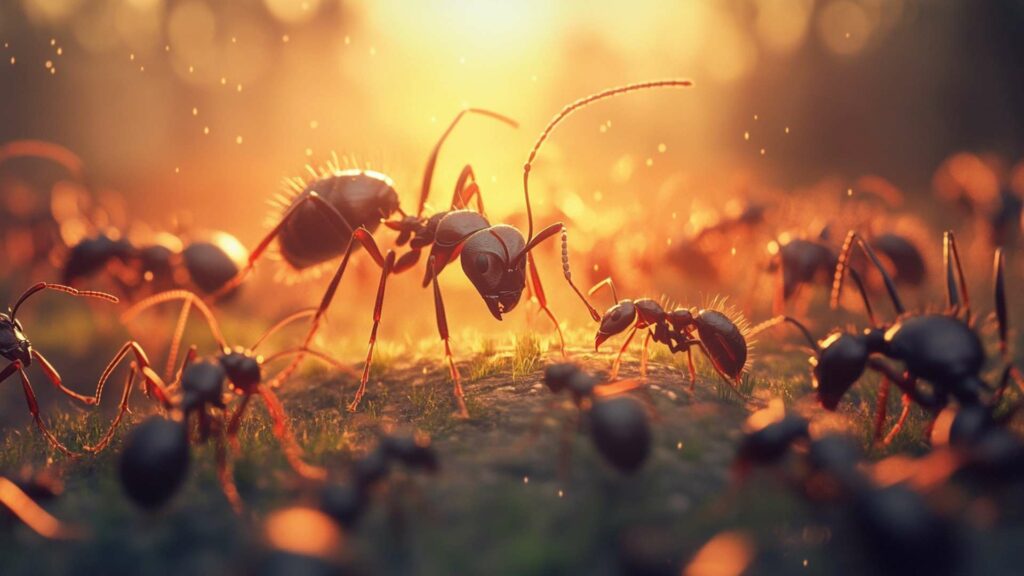
Knowing what carpenter ants eat holds significant importance in various contexts. For homeowners dealing with infestations, comprehending these dietary habits becomes crucial in carrying out effective pest control measures. Identifying the food sources that attract the carpenter ant nest and ants can help target specific areas for treatment or exclusion methods.
Carpenter ant prevention also heavily relies on understanding their dietary preferences. By eliminating potential food sources like spilled sugar or other sweet foods, homeowners can reduce the likelihood of attracting these ants into their living spaces.
Additionally, taking measures to seal cracks and crevices that may serve as entry points for foraging carpenter ants forage, can aid in preventing infestations. Moreover, understanding the diet of carpenter ants has broader ecological implications.
These insects play essential roles in pollination by frequenting flowers for nectar, aiding in plant reproduction, and maintaining biodiversity. Recognizing their importance as both consumers and contributors to ecosystems allows us to appreciate their place in the natural world and work towards sustainable coexistence.
General Diet of Carpenter Ants
Carpenter ants have a notorious sweet tooth, making them particularly fond of sugary substances. Their affinity for sweet foods is evident in their feeding habits, where they actively seek out nectar from flowers and fruits.
These resourceful ants are known to explore blooming gardens, collecting the delectable nectar to satiate their cravings. Their foraging efforts not only benefit the ant colony but also facilitate the pollination process, inadvertently aiding in the reproduction of flowering plants.
Nectar from Flowers and Fruits
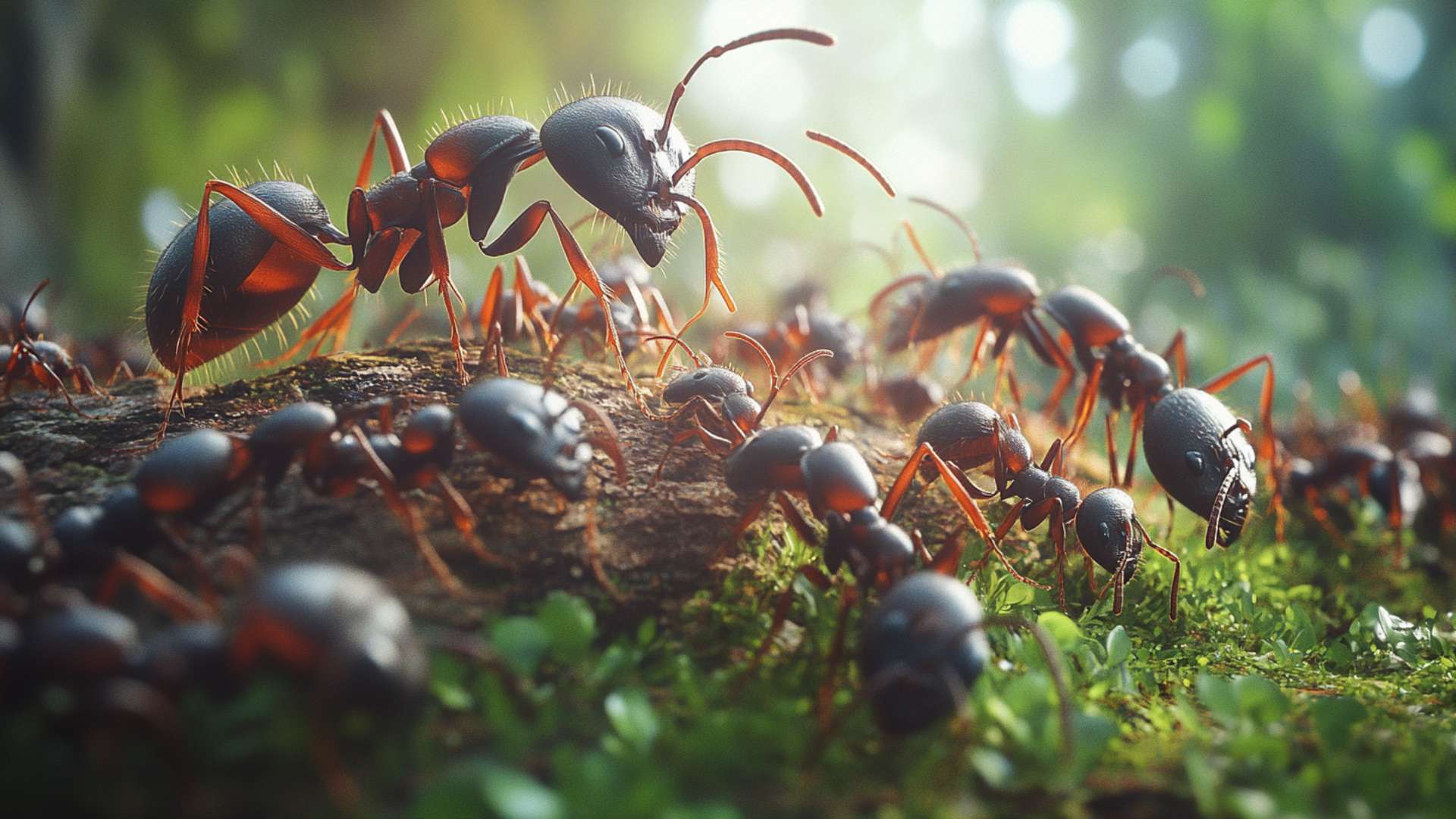
When carpenter ants visit flowers, they skillfully navigate the delicate petals, swiftly extracting the abundant nectar concealed within. They can often be seen maneuvering around vibrant blooms, savoring the floral feast that nature graciously provides.
Additionally, these industrious insects do not limit themselves solely to flowers; they also indulge in ripe fruits that offer a succulent source of sweetness. By partaking in this fruit buffet and spreading seeds as they travel between trees, carpenter ants play an unintentional role in dispersing plant life.
Honeydew produced by aphids and scale insects

Another irresistible treat on these ants’ menu is honeydew – a sweet liquid produced by sap-sucking insects like aphids and scale insects. Carpenter ants cultivate symbiotic relationships with these tiny sap lovers as both parties reap benefits from each other’s presence.
The sap-sucking insects provide a continuous supply of honeydew droplets which serve as an energy-packed elixir for carpenter ants. In return, the carpenter ants feed and protect these sap-suckers from predators while securing a reliable food source for themselves.
Consumption of Protein-Rich Sources
While carpenter ants may have a penchant for sweets, they are not exclusively sugar enthusiasts. These resourceful insects also have a varied diet that includes protein-rich sources. They are relentless hunters, scavenging for other insects to satisfy their need for protein.
Carpenter ants devour a wide range of insects, both dead and alive, offering an efficient pest control mechanism within their ecosystem. Additionally, they seize opportunities to feast on meat scraps or carcasses, be it from discarded food or nature’s own leftovers.
With their diverse appetite for sweet foods and protein sources alike, carpenter ants display remarkable adaptability in acquiring the necessary nutrients to sustain their large colonies. Understanding the dietary preferences of these ants is essential when attempting to manage or eliminate carpenter ant infestations effectively.
By targeting the food sources that attract carpenter ant infestation to them and implementing appropriate pest control measures, one can disrupt their foraging patterns and deter them from establishing satellite nests in homes or other structures. Now that we have explored the general diet of carpenter ants, including their preference for sweet foods like nectar and honeydew as well as their consumption of protein-rich sources such as other insects and meat scraps, we can delve deeper into their foraging behavior and the various food sources they encounter in their environment.
Foraging Behavior and Food Sources
Carpenter ants are diligent foragers, constantly on the lookout for sources of sustenance within their territories. These territories can range from a few yards to several hundred yards in diameter.
The worker ants, smaller in size than the queen but responsible for gathering food, venture out from the central nest, known as the parent colony, in search of nourishment. They painstakingly explore every nook and cranny, leaving no stone unturned (quite literally) as they seek out potential food sources.
Scouting for New Food Sources Over Long Distances

In addition to exploring their immediate surroundings, carpenter ants are also known to scout for new food sources over surprisingly long distances. A single carpenter ant foraging, can travel up to 100 feet away from its parent colony in pursuit of sustenance. These resourceful insects possess a keen sense of smell that allows them to detect even the faintest traces of appealing aromas wafting through the air.
Following Scent Trails Left by Other Ants to Locate Food Quickly
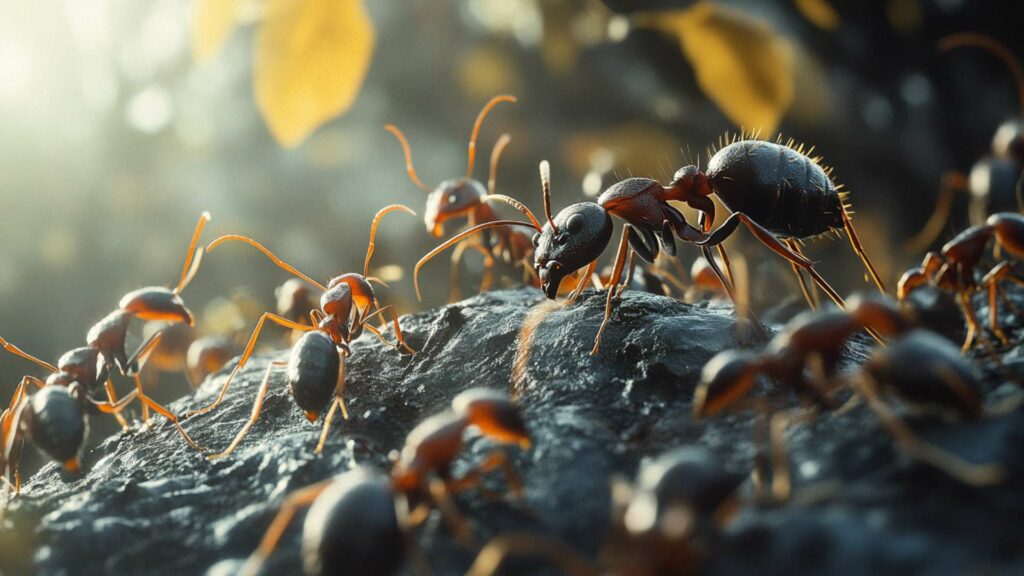
One remarkable aspect of carpenter ant behavior is their ability to communicate effectively with each other when it comes to food location. If a worker carpenter ant is foraging and stumbles upon a particularly enticing source of nourishment while scouring its surroundings, it will leave behind a scent trail that other ants can pick up on. By following these trails left by their fellow members, these industrious insects can quickly locate bountiful food sources with remarkable efficiency.
Natural Food Sources Found in the Environment
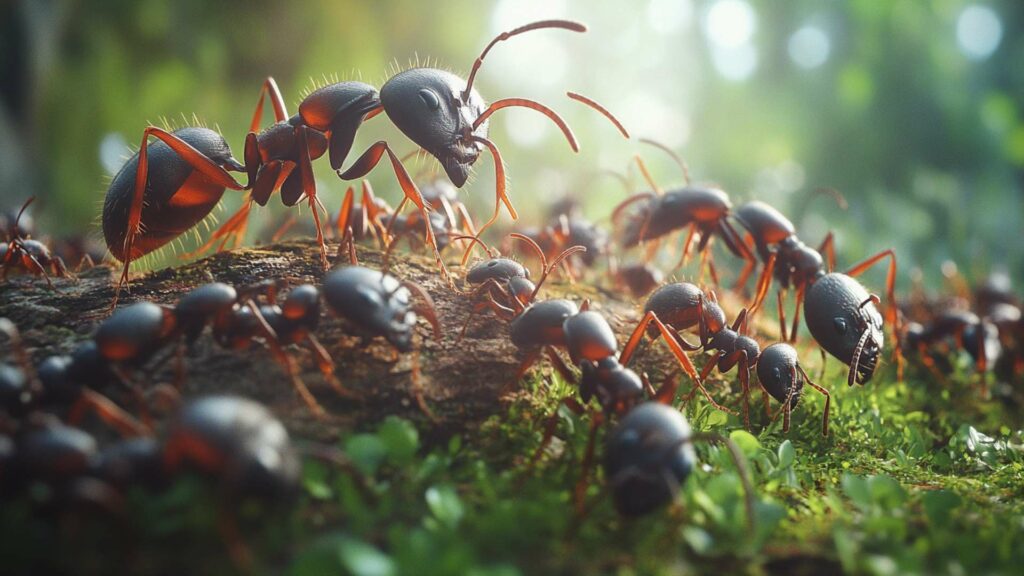
When it comes to natural food sources found in their immediate environment, carpenter ants have developed an intricate palate that includes both sap from trees and fallen fruits or seeds on the ground. Carpenter ants are particularly fond of trees infested with scale insects, as they produce a sweet sap that serves as a delectable treat.
These resourceful creatures are known to create small holes in the infested trees to access the sap and rotting wood, cleverly turning an unfortunate circumstance for the tree into a feast for themselves. Additionally, when fruits or seeds fall to the ground, carpenter ants waste no time in capitalizing on this windfall of nourishment.
By understanding the foraging behavior and food sources of carpenter ants, we gain valuable insights into their lifestyle and can better address any issues that may arise from their presence. Whether it’s locating nests and controlling carpenter ant populations or simply preventing them from damaging our wooden structures, knowledge about what these fascinating creatures eat helps us navigate the intricacies of coexisting with these industrious insects.
Unique Dietary Preferences and Adaptations
Carpenter ants have a strong inclination towards sugary substances, which plays a significant role in their dietary preferences. These resourceful insects are attracted to the sweet nectar produced by various flowers, such as honeysuckle and daisies.
When given the opportunity, they will eagerly feed on these floral delights, contributing inadvertently to the pollination process as they move from one blossom to another. It’s fascinating to observe how even though carpenter ants don’t intentionally seek out flowers for sustenance, their sugar-seeking behavior indirectly assists in the reproduction of flowering plants.
Collecting Honeydew from Aphids, Mealybugs, or Scale Insects on Plants
Another intriguing aspect of carpenter ants’ diet is their unique ability to collect honeydew from aphids, mealybugs, and scale insects found on plants. These tiny insects secrete a sugary substance known as honeydew that serves as a valuable food source for carpenter ant nests and ants.
The worker who treats carpenter ants diligently stroke the abdomens of these sap-feeding creatures using their antennae so they can obtain this delectable treat. This mutually beneficial relationship between carpenter ants and honeydew-producing insects showcases nature’s intricate web of dependencies.
Extraction of Sap from Trees through Small Holes They Create
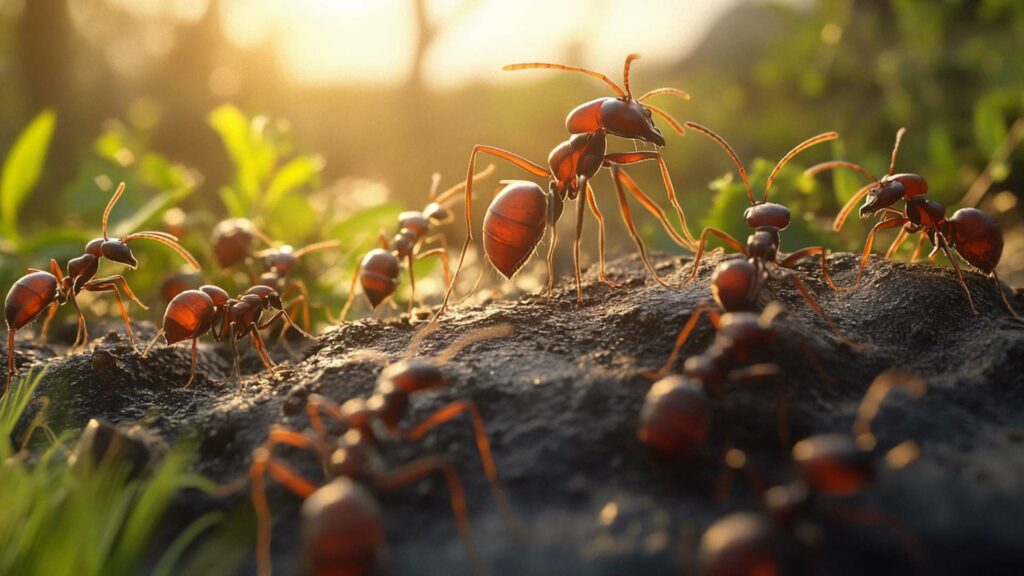
Apart from indulging in floral nectars and honeydew, carpenter ants have developed an ingenious method for extracting sap and wood from trees. These resourceful creatures create small holes in trees’ bark using their powerful mandibles.
Once an entry point is established, they access the tree’s sap by chewing through inner layers of bark until it begins to flow out like liquid gold. This behavior not only provides carpenter ants with nourishment but also exposes them to the hidden world within trees, where they can establish satellite colonies or expand their existing ones in these hollow cavities.
It’s truly remarkable how carpenter ants have adapted to take advantage of the abundant resources found in their surroundings. By understanding the unique dietary preferences and adaptations of carpenter ants, we gain valuable insights into their behavior and ecosystem roles.
Whether they are feasting on sweet nectar from flowers, collecting honeydew from sap-feeding insects, or extracting sap from trees through tiny holes, these insects display remarkable resourcefulness. Appreciating this natural behavior can lead us to a better comprehension of how to control carpenter ants, ant prevention, and managing any potential carpenter ant problems that may arise.
Flower Nectar as a Carbohydrate Source
Carpenter ants have a sweet tooth when it comes to their carbohydrate intake. One of their preferred sources of this vital nutrient is the nectar found in flowers.
While they are not as efficient as bees in the pollination process, carpenter ants unintentionally contribute by transferring pollen from flower to flower as they collect nectar. Among the flower species that carpenter ants often favor are honeysuckle and daisies, with their vibrant blooms acting as irresistible beacons for these industrious insects.
Honeydew as a Sugary Treat
Another delectable delight for carpenter ants is honeydew, which holds a special significance in their dietary preferences. Honeydew is not actually produced by the carpenter ant queen or ants themselves but rather by sap-sucking insects such as aphids and scale insects that feed on plants.
Carpenter ants form symbiotic relationships with these sap-sucking insects, who provide them with this sweet liquid in exchange for protection against predators. To gather honeydew, the diligent carpenter ant employs an intriguing method: stroking the abdomen of the aphids or scale insects using its antennae, causing them to release droplets of honeydew.
Protein-Rich Diet Options
While carbohydrates provide carpenter ants with essential energy, they must also maintain a protein-rich diet to support their growth and development. These resourceful insects include other small living and dead insects in their menu pet food choices. Carpenter ants actively scavenge for protein sources like dead arthropods or meat scraps left behind by humans or other animals.
They can even prey upon other insects encountered during their foraging expeditions. This varied diet ensures that most carpenter ant species’ colonies remain well-fed and can sustain large populations within their intricate nests.
Conclusion
Understanding what carpenter ants eat sheds light on their dietary preferences and ecological roles. These fascinating creatures have a knack for finding sugary treasures such as flower nectar and honeydew, inadvertently contributing to the pollination process along the way. Their protein-rich diet, comprising both living and dead insects, enhances their overall vitality.
By comprehending their food choices, we can better manage and eliminate carpenter ants and ant infestations by eliminating attractive food sources or employing targeted baiting techniques. So, let us appreciate these resourceful insects for their intriguing culinary habits while taking steps to coexist peacefully with them in our natural surroundings.
Dissuade Ants with D-Termination: Las Vegas’ Foremost Pest Control Service!

If you’re confronted with ant challenges, D-Termination is ready to help. Our highly skilled team excels at discouraging ants, rejuvenating cleanliness, and preserving the integrity of your surroundings. Bid farewell to ants—opt for D-Termination for effective pest control today!
Reach out to us at 702-919-6310 or visit dtermination.com to schedule your ant control service and regain your space from these unwanted pests.
Frequently Asked Questions:
Carpenter ants are attracted to sugary and protein-based foods but don’t have a single favorite.
Carpenter ants generally dislike strong scents like vinegar, cinnamon, and certain essential oils.
Attraction and elimination of carpenter ants involve baits and insecticides.
Inside homes, carpenter ants might seek out sweets, meats, and other food scraps.

